As an Amazon Associate I earn from qualifying purchases. Please read the disclaimer for more info.
Embark on a journey of discovery and explore the delicious bounty of Thai fruits! From sweet and tangy rambutan to fragrant mangosteen, our comprehensive list of 20 fruits from Thailand is sure to satisfy your craving for something exotic.
With their unique flavors and textures, these tropical fruits will tantalize your taste buds and take you on a flavorful exploration of the wondrous world of Thai cuisine.
Oh, and we’ll also suggest a few recipe ideas for these exotic Thai fruits to allow you to take advantage of all the fresh fruit at your disposal.
Thai Fruits Festivals
Thailand is renowned for its colorful and vibrant festivals, and some of the most popular and exciting ones involve fruit, including:
- Wan Makha Bucha Day in mid-April, which is a pineapple festival;
- Nakhon Si Thammarat Candle Festival in the first week of October, which is a durian festival;
- Krabi Fruit Festival is a dragon fruit festival in the last week of January.
- Rayong Fruit Festival is held annually in April to promote Rayong’s famous fruits such as rambutan, mangosteen, and longan.
These lively gatherings present opportunities for locals and tourists alike to mingle with each other while indulging in delicious fruit delicacies!
20 Thai Fruits to Experience When in Thailand
Rose Apple
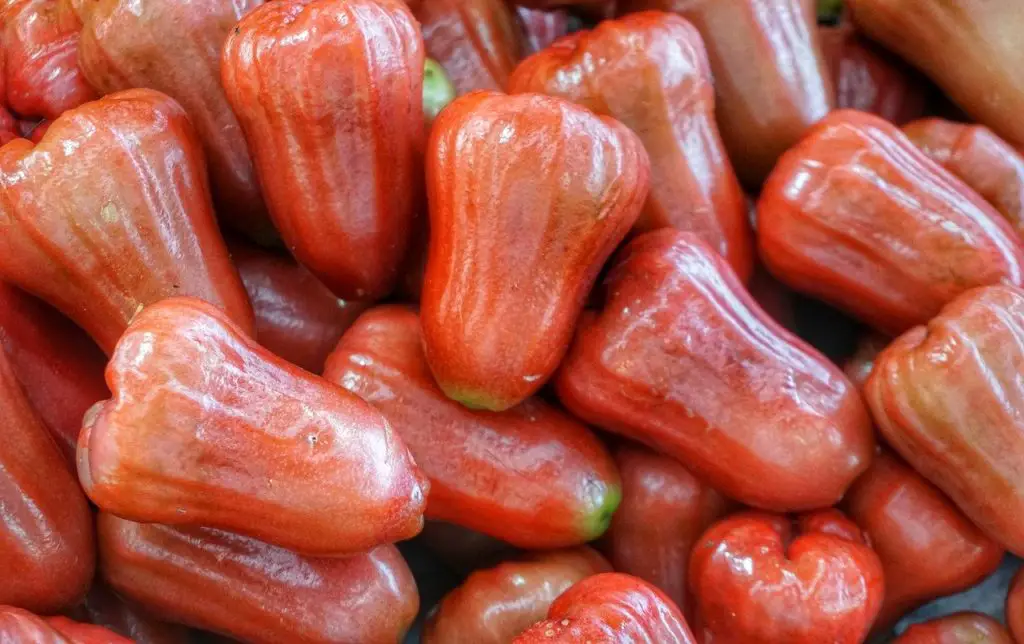
Rose Apples are a popular fruit in Thailand, with a unique flavor that is hard to describe.
Some say it tastes like a combination of pear and watermelon, while others say it tastes like a cross between a raspberry and a grapefruit. What everyone can agree on is that it’s delicious!
The rose apple season in Thailand is typically from May to August when the fruit is at its ripest and juiciest.
During this time, you’ll find them in abundance at local markets and street vendors across the country.
Rose apples can replace meat in a Thai curry using red curry paste, green chilies, coconut milk, chickpeas, and cashews. Add chunks of rose apple and allow to soften.
Related: 17 Malaysian Fruits to Try
Durian
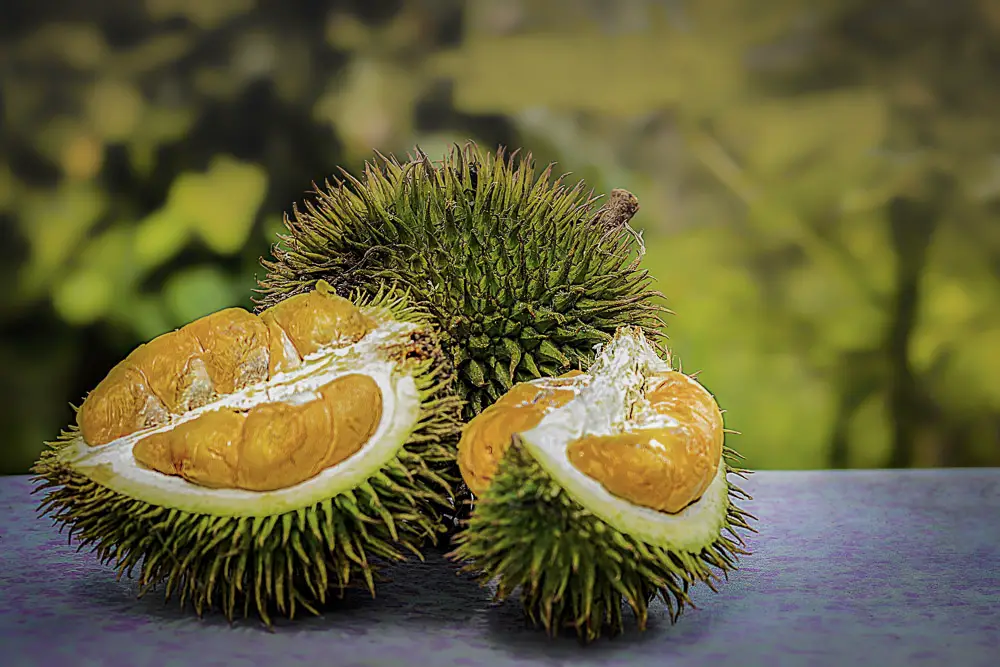
Thailand’s love affair with the durian fruit is no secret.
The aroma of this thorny fruit is unmistakable and can be detected from afar.
The flavor of the raw fruit is divisive but a must-try for adventurous foodies.
Durian has a rich, creamy texture and a pungent aroma reminiscent of onion and garlic. The flavor is an intense combination of sweet, savory and bitter notes.
While Durian fruits are available year-round, the peak durian season runs from May to August.
During this time, the markets are flooded with fresh durian and street fruit vendors who can be seen selling the fruit whole or in sections.
If you’re in Thailand during the growing season, try the durian!
It may not be everyone’s cup of tea, but it’s certainly an experience you won’t forget.
Custard Apple
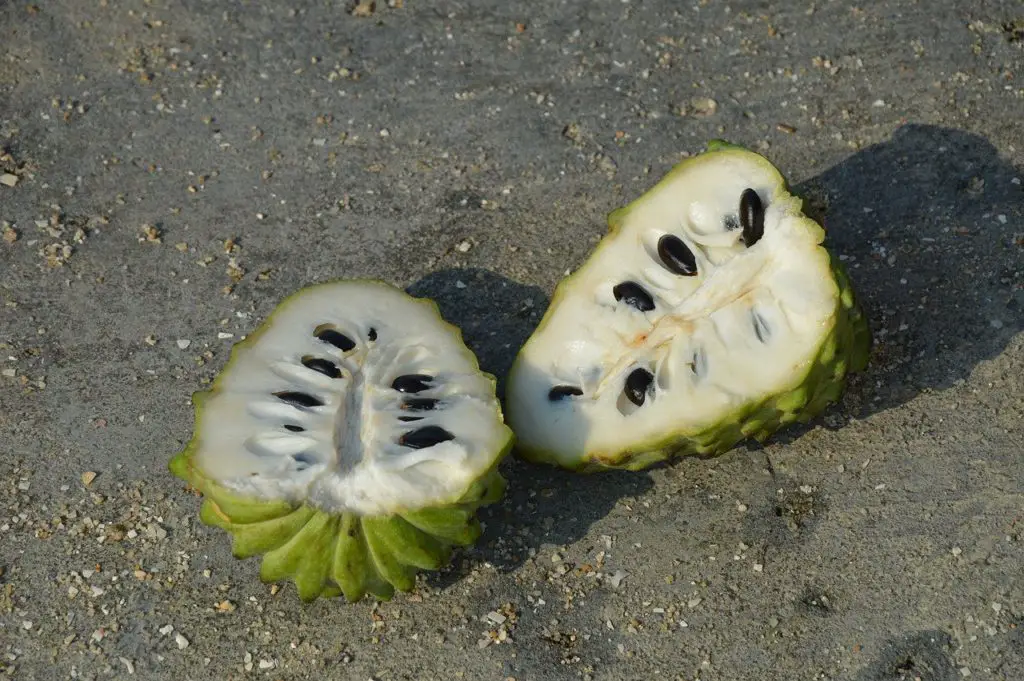
Custard apples, a tropical fruit native to South America, have become a delicacy in Thailand.
With a fragrant aroma and a creamy texture, their taste can be described as a mix of bananas, pineapple, and vanilla custard.
Their flesh is soft and juicy, with brown seeds that are not usually consumed.
These Thai fruits are typically in season during the summer and fall months, making them a refreshing treat in the hot climate of Thailand.
They are usually enjoyed fresh and can be used in desserts such as custard apple ice cream or smoothies.
Snake Fruit
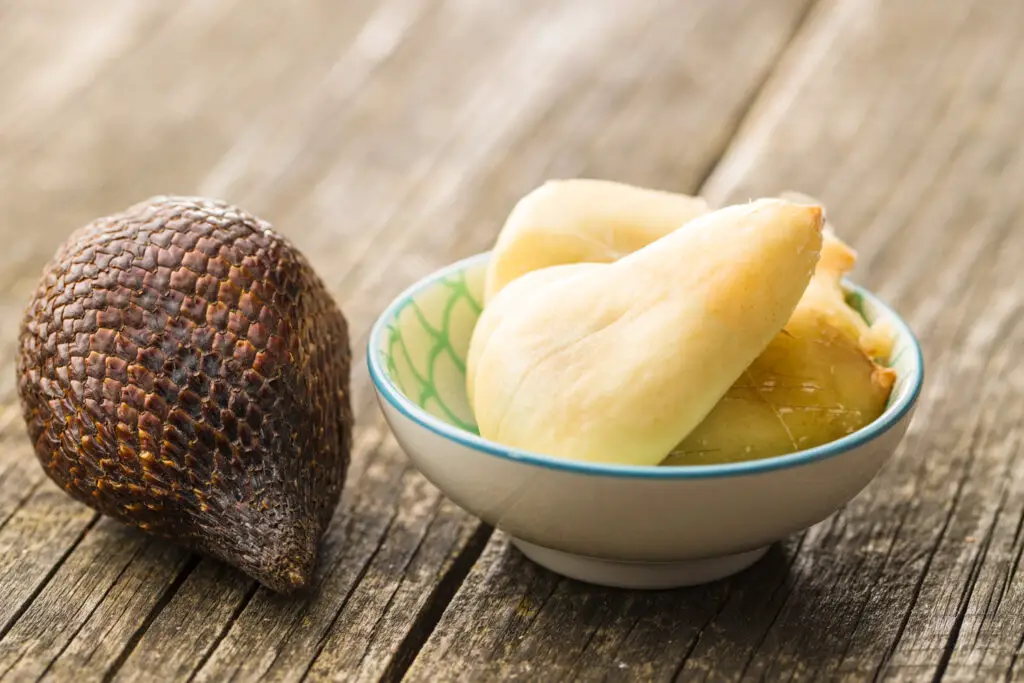
Snake fruit, also known as salak, is a peculiar fruit native to Indonesia and other Southeast Asian countries, including Thailand.
In Thailand, snake fruit grows abundantly during the rainy season, typically from June to October.
These small, brown fruits are covered in snake-like scales that give them their distinctive appearance.
Once peeled, the inside of the fruit is white and divided into three lobes, each containing a large, inedible seed.
Eaten raw, the taste of snake fruit is a combination of pineapple and apple, with sweet and sour flavours and an astringent aftertaste.
If you’re feeling adventurous and happen to come across these intriguing Thai fruits, be sure to give them a try!
Mango

Thailand is home to some of the juiciest and most succulent mangoes on the planet.
The tropical climate and fertile soil make for perfect growing conditions, so the country produces around 2 million tons of mangoes yearly.
From April to June, the trees are heavy with fruit, and it’s not uncommon to see street vendors selling bags of ripe, golden-yellow mangoes.
This Thai fruit tastes sweet, tangy, and almost buttery, with a soft, creamy flesh that practically melts in your mouth.
Mangoes are a popular ingredient in Thai cuisine, and one of the best ways to enjoy them is in a refreshing mango salad.
Cut the fruit into small pieces and mix it with red onions, coriander, lime juice, and some chopped roasted peanuts.
It’s a taste sensation perfect for beating the heat on a hot summer day.
Dragon Fruit
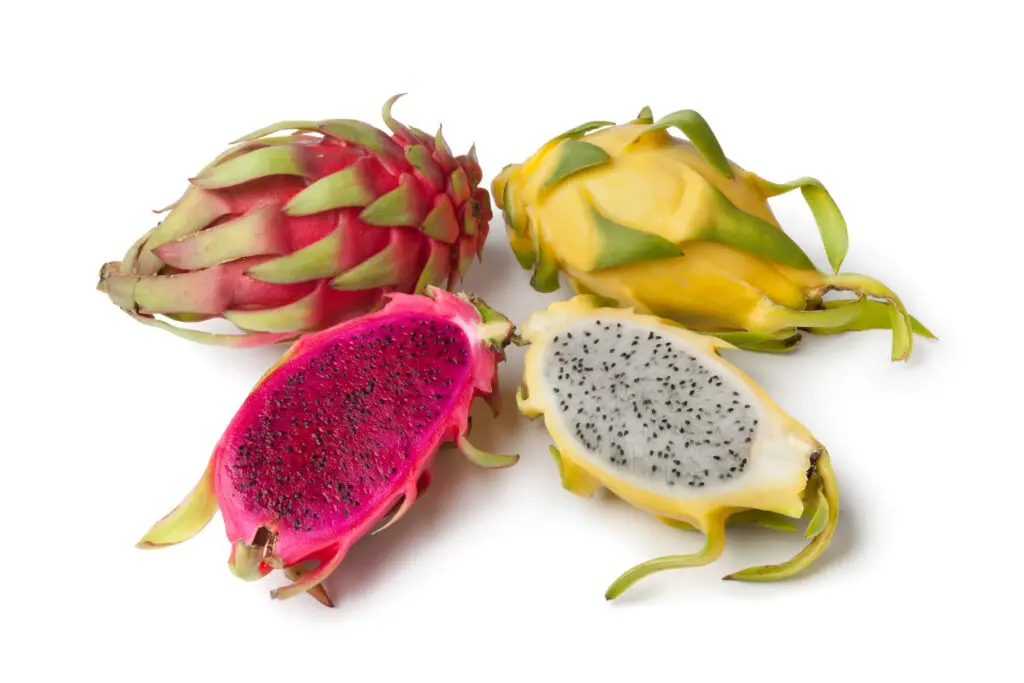
Dragon fruit is a vibrant and deliciously sweet fruit found all over Thailand.
The fruit has a sweet and tangy taste and is known for its unique texture, similar to kiwi fruit.
The dragon fruit season for this exotic fruit is from May to September, which means it’s perfect for adding to your summertime fruit salads or snacking on by itself.
Dragon fruit comes in various vibrant colors, from a creamy white to shades of pink, red, and yellow.
Each color variation has subtle taste differences ranging from slightly sweet to mildly acidic.
If you’re feeling adventurous, add yellow dragon fruit to your Thai curry or make it into a refreshing smoothie.
One popular recipe is dragon fruit salsa, where the fruit is mixed with lime juice, cilantro, and jalapeno for a sweet and spicy twist on a classic dip.
Plum Mango
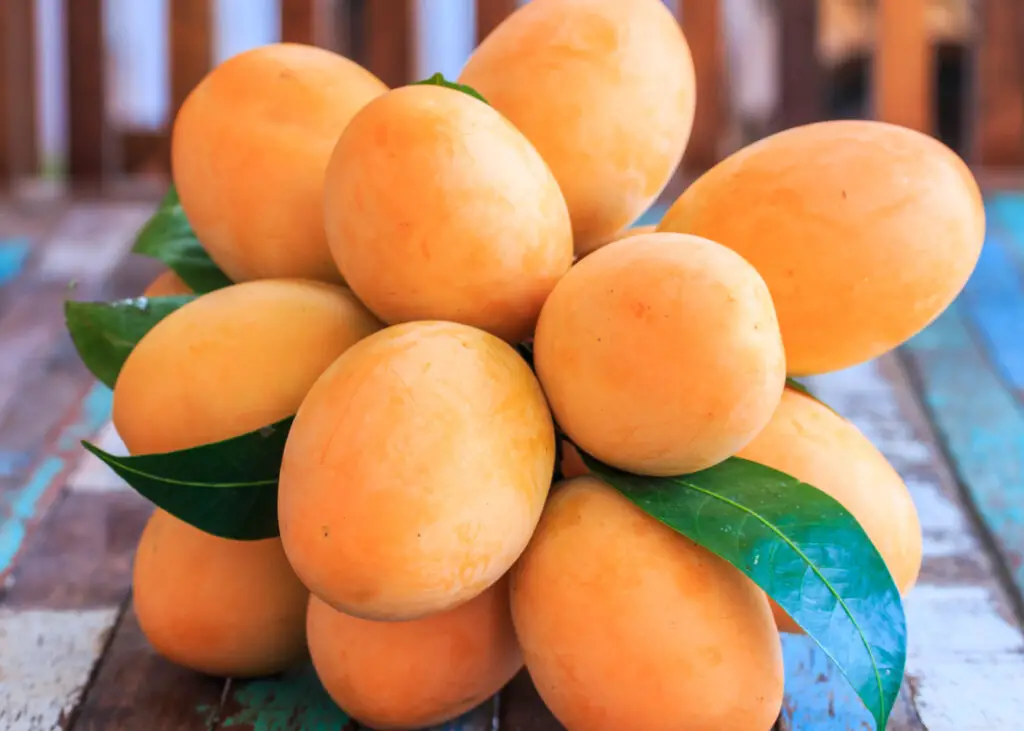
Plum mango is a Thai fruit that is a unique and delicious tropical treat with a taste that is hard to describe.
The fruit typically grows during the rainy season, from June to August, and has a small, plum-like appearance with yellow-green skin.
When ripe, the flesh is juicy and sweet, with a slight tartness that tingles the senses.
The flavor is a complex combination of tropical notes such as pineapple, mango, and citrus, making it perfect for incorporating into salads, salsas, or smoothies.
One viable recipe is to cut the fruit into pieces and mix it with a spicy blend of red chili, garlic, and fish sauce to create an exquisite Thai-style salad.
Langsat
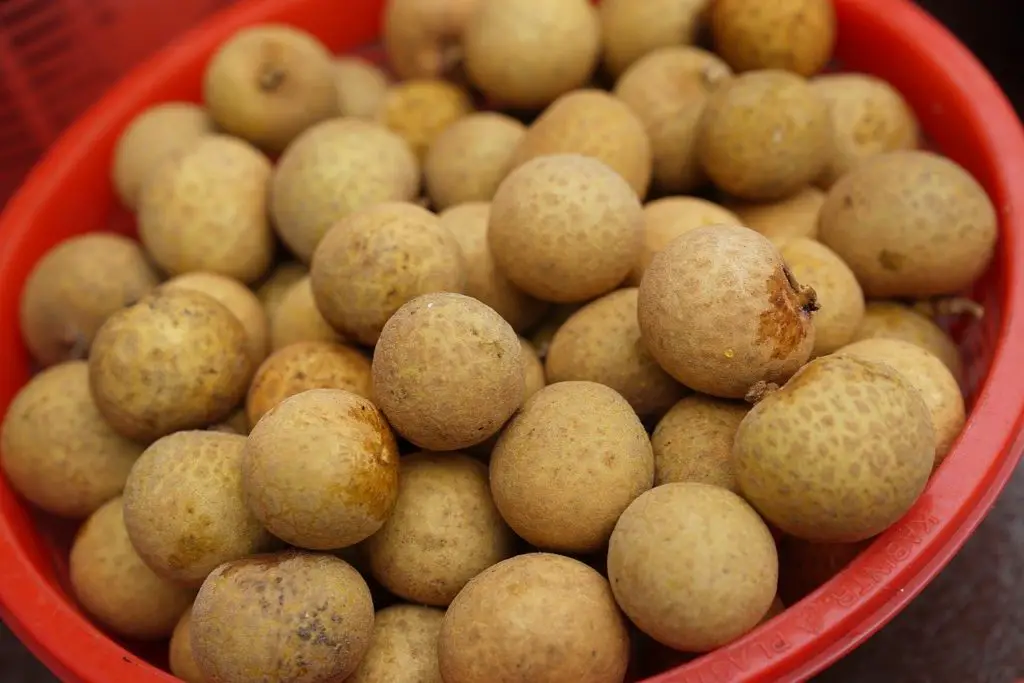
Thailand’s hot and humid climate is ideal for growing various exotic fruits, including the unique langsat, also known as langzones.
These oval-shaped fruits have green-to-yellow skin and are about the size of a large plum.
When you cut them open, their pale yellow flesh is juicy and distinctly sweet and tangy, reminiscent of a cross between a grapefruit and a tangerine.
The season for this Thai fruit is from May to August, and they are often used in Thai cuisine to add a zesty pop of flavor to dishes like salads, curries, or grilled meats.
Sugar Apple
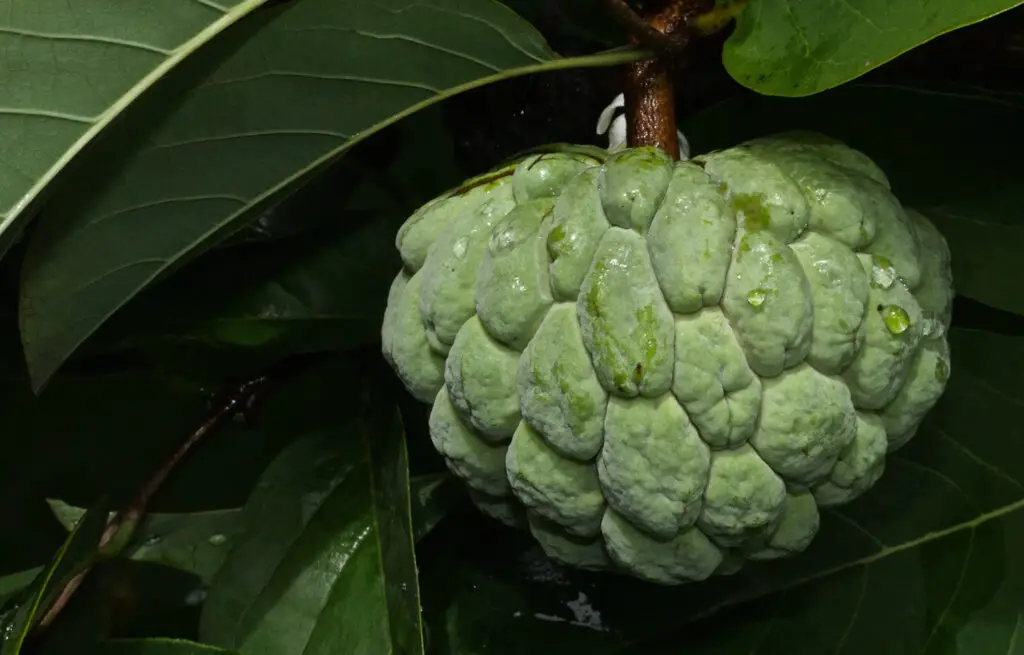
Sugar apple fruit, or Atis or custard apple, is a Thai fruit popular in the country.
This fruit has a uniquely sweet, creamy, and tangy flavor.
It is so juicy that you can taste the juice dripping down your chin with every bite.
The growing season for these Thai fruits is from May to September.
They thrive in hot, humid conditions and grow on small, fruit-bearing trees.
In Thailand, sugar apple fruit is not usually used for cooking. However, it makes a delicious and refreshing drink when blended with water and served as a smoothie.
Guava
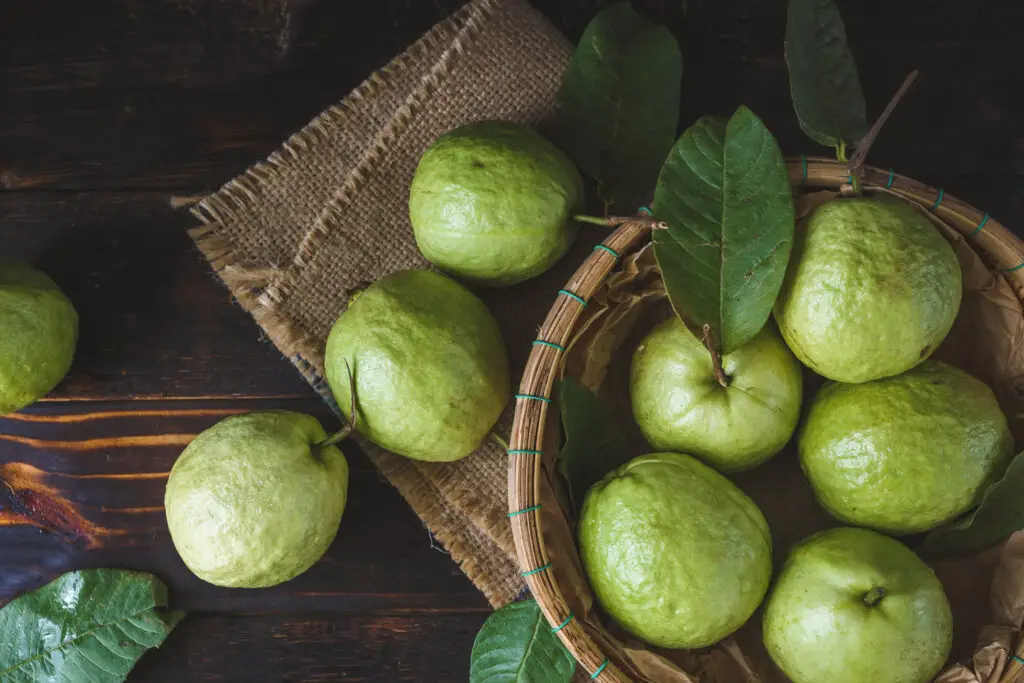
Guava fruit in Thailand is a true culinary delight. These exotic Thai fruits are known for their sweet, tropical refreshing and satisfying flavor.
Guava season in Thailand typically runs from August through December, providing abundant fresh fruits for locals and visitors alike.
One popular way to incorporate guava into Thai cuisine is in a spicy salad known as “yam pla duk fu,” which combines shredded catfish and crispy guava slices with chili peppers, lime juice, and other savory ingredients.
Pomelo
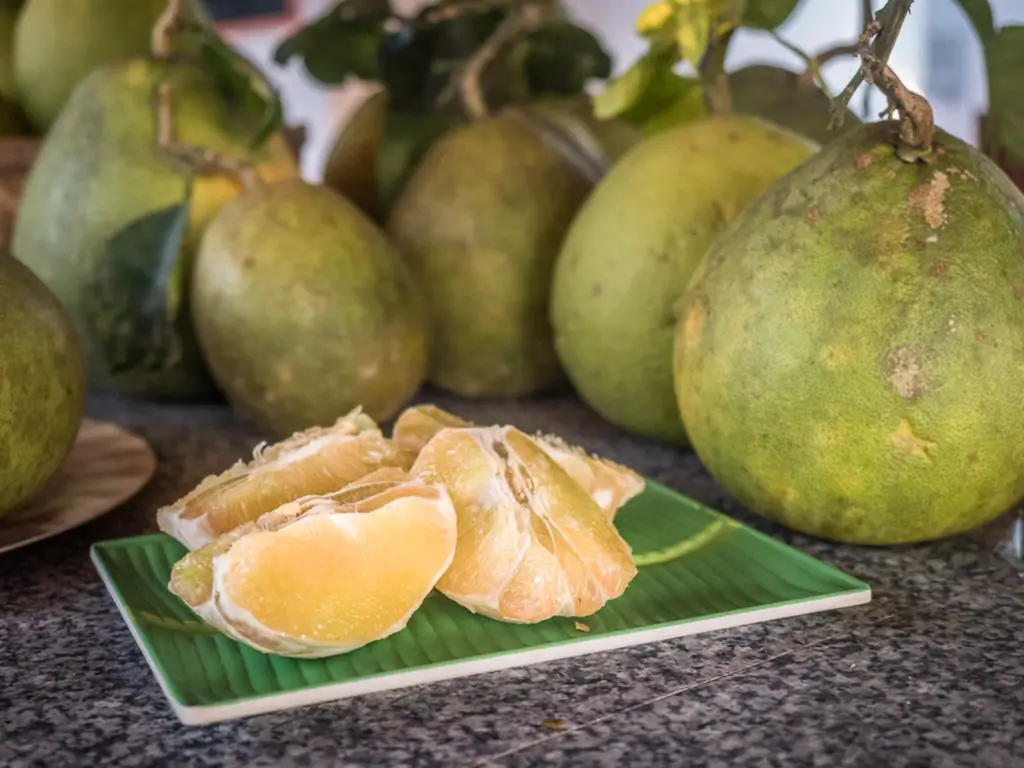
Pomelo fruit, known as “som-o” in Thailand, is a beloved citrus fruit that is enjoyed by many.
The fruit is categorized as one of the country’s most aromatic and refreshing fruits.
Its taste balances the perfect blend of sweet and sour, with hints of bitterness that enhance the overall flavor.
A popular recipe with pomelo fruit is the “Yam Som-o” salad, consisting of pomelo flesh, shrimp, shallots, mint, and a tangy dressing made of fish sauce, lime juice, and chili paste.
This dish is not only satisfying but also a healthy option for those who seek a refreshing meal.
Tamarind
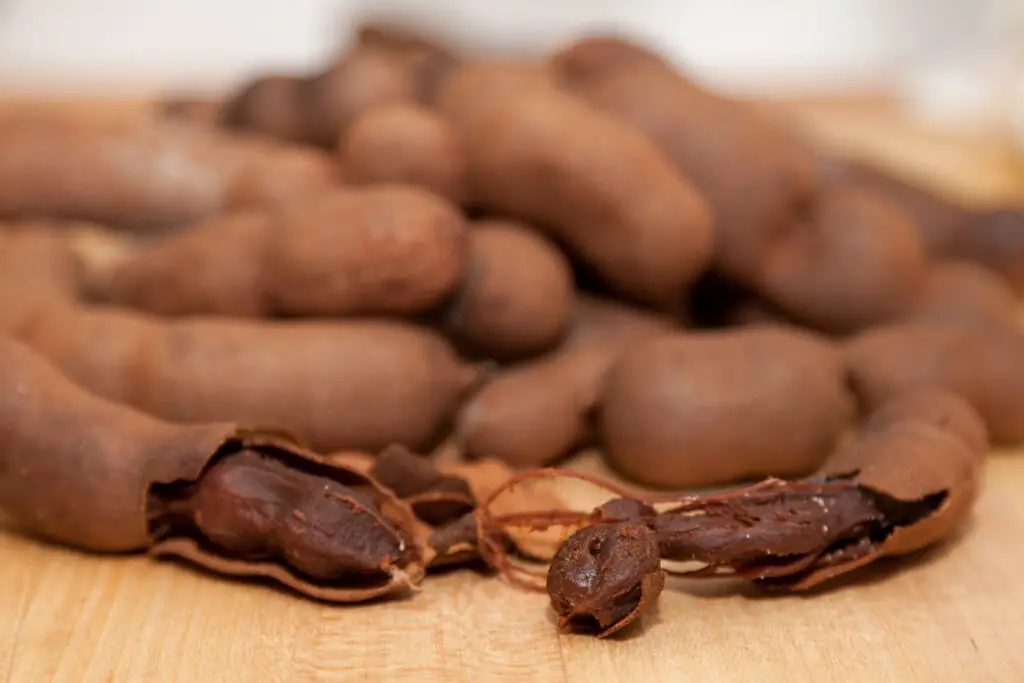
Tamarind is a beloved fruit in Thailand for its distinct sweet and tangy flavor.
Its taste has been described as a cross between dates and lemons, with a little sourness, making it a popular addition to many traditional Thai dishes.
The tamarind also has a longer growing season in Thailand, from May to September, where the trees can grow up to 15 meters tall.
One of the most famous dishes using tamarind is Pad Thai, a stir-fried noodle dish, where tamarind gives a subtle sweetness while balancing the flavors of the other ingredients.
Tamarind is also a common ingredient in Thai curries, soups, and sauces, giving them a rich and vibrant flavor.
Star Fruit
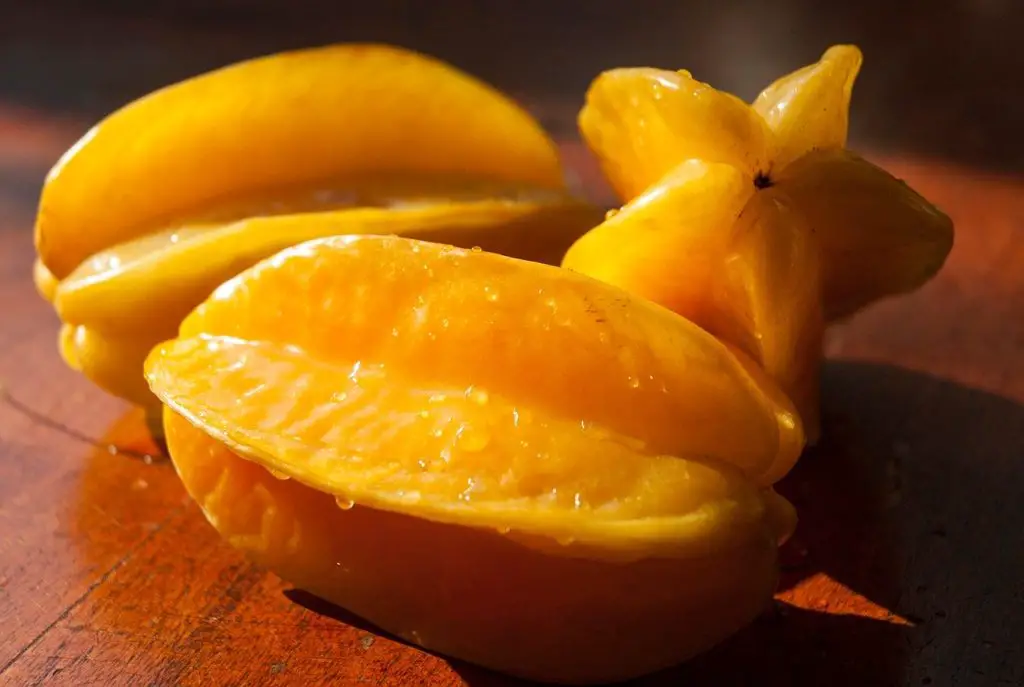
Have you ever tasted the uniquely shaped star fruit in Thailand?
This juicy and tropical fruit is known for its bright yellow skin and star-shaped cross-section.
These Thai fruits have a refreshing citrus-like taste, with a subtle sweetness and sourness that adds a dazzling flavor to any dish.
The star fruit season is during the rainy season from June to September.
It is a versatile fruit that can be enjoyed raw or cooked. One tasty Thai recipe that features star fruit is the “Yam Ma Keua Yao,” a spicy eggplant salad served with star fruit slices.
Passion Fruit
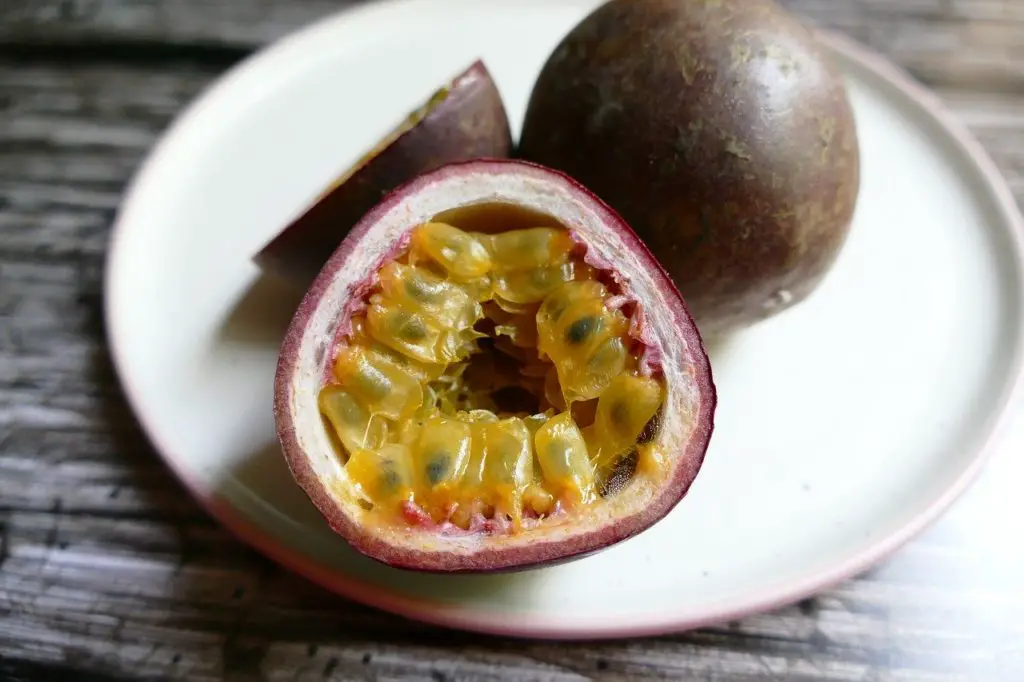
Passion fruit, known as “saowarak” in Thailand, is a must-try tropical fruit for those visiting the country.
These small, round fruits have tough, smooth skin that is either purple or yellow when ripe.
Cutting them open reveals a bright orange pulp and many small, crunchy seeds. The taste perfectly balances sweet and tart, making it popular for desserts, drinks, and even savory dishes.
The best time to find passion fruit in Thailand is during the rainy season between May and October.
One tasty recipe that features passion fruit is a passion fruit and coconut milk panna cotta, which is silky smooth and loaded with tropical flavor.
Papaya
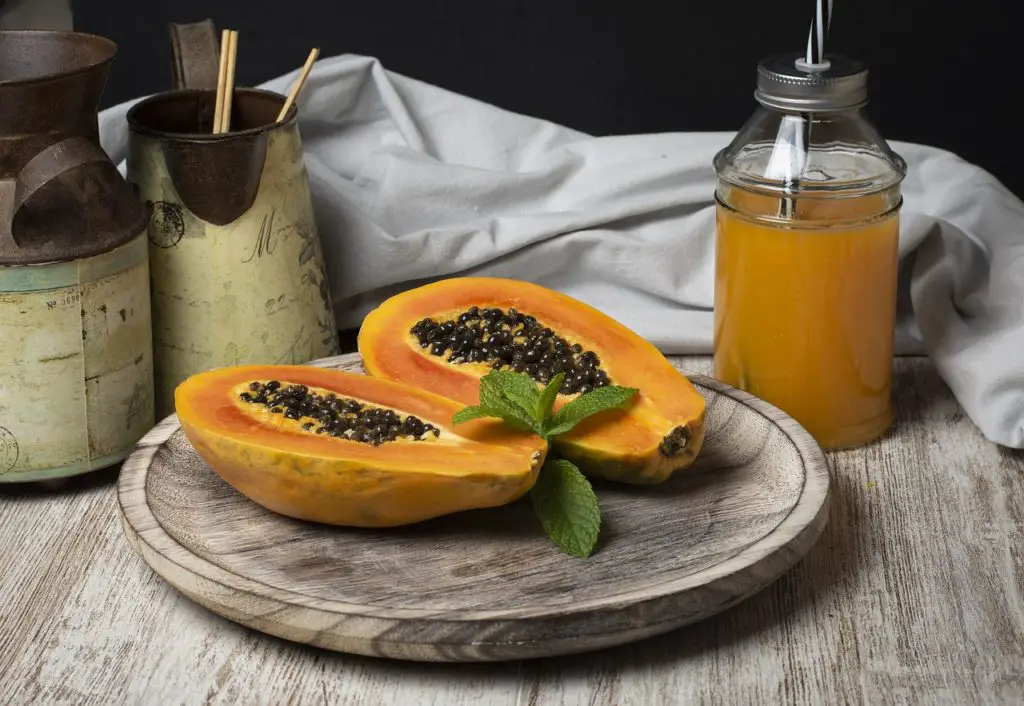
Papaya fruit is a tropical delicacy that is widely enjoyed in Thailand.
The Thai fruit, with its golden yellow colour, has a soft, juicy consistency and a sweet, slightly musky flavor that is both refreshing and satisfying. The growing season for papayas in Thailand is year-round, with peak harvests from May to September.
This fruit is widely used in Thai cuisine, especially salads, marinades, and curries.
A popular recipe is green Thai papaya salad which includes shredded green papaya, tomatoes, chili peppers, and lime juice. The sweet, spicy, and sour flavors make it a favorite dish.
Santol
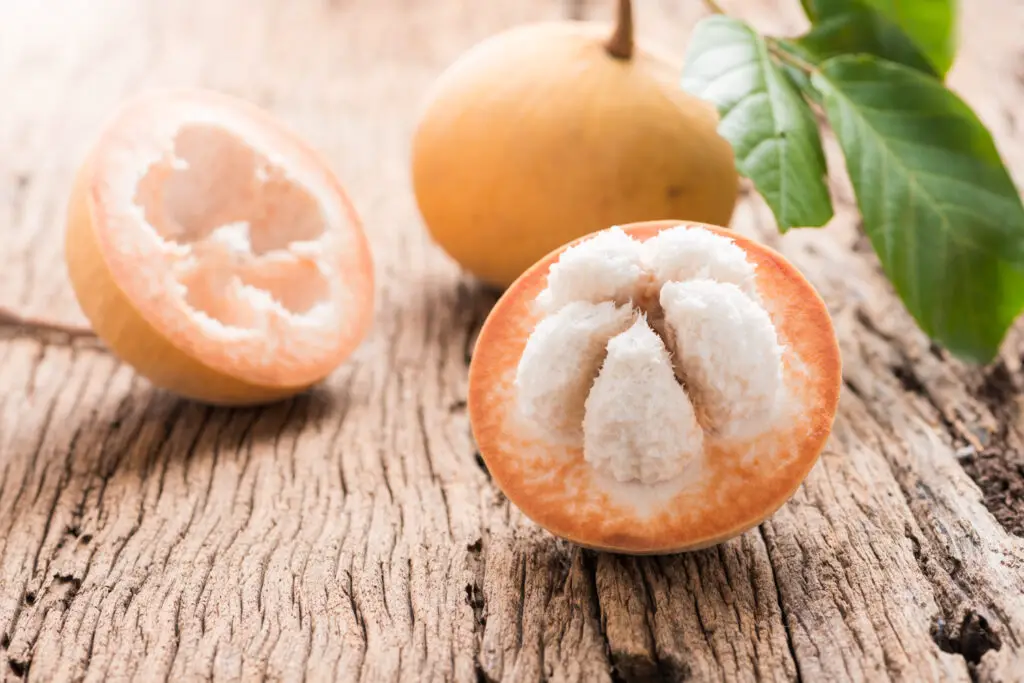
Santol, also known as cotton fruit, is a popular Thai fruit with unique flavor and texture.
The fruit’s sweet and sour taste is reminiscent of a combination of peaches and pineapples, while its texture is similar to that of ripe tomatoes.
Santol is grown during the rainy season in Thailand, from May to August. This fruit is delicious as a standalone snack and a popular ingredient in Thai cuisine.
One popular recipe is Santol stir-fry with shrimp, where the fruit is peeled, seeded, and sliced before being stir-fried with shrimp, garlic, chili, and lime juice.
Related: 20 African Fruits in Zanzibar
Pineapple
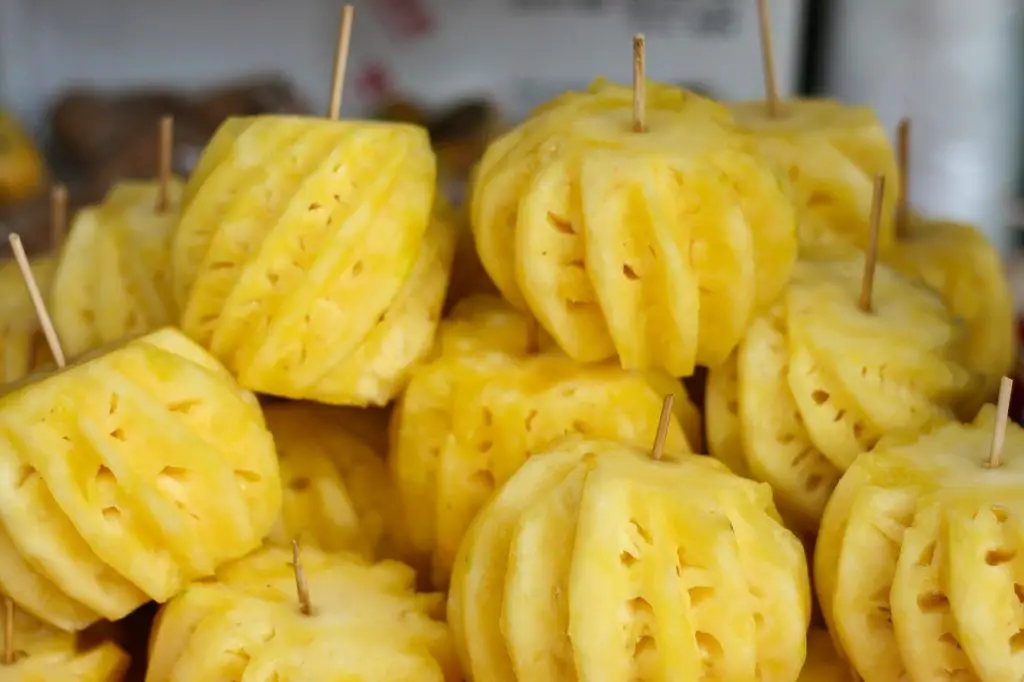
Pineapple in Thailand is a tropical treat famous for its sweet and tangy flavor.
The fruit is in season from March to June and is widely available.
These Thai fruits are known for their golden color and juiciness, making them an ideal ingredient for recipes such as pineapple fried rice, tom yum soup, and pineapple curry.
One popular dish is the “Pad Sapparot,” a stir-fried dish that combines pineapple chunks, chicken, cashews, and vegetables in a delicious blend of flavors.
Related: Recipe For Pineapple Slushy
Hog Plum
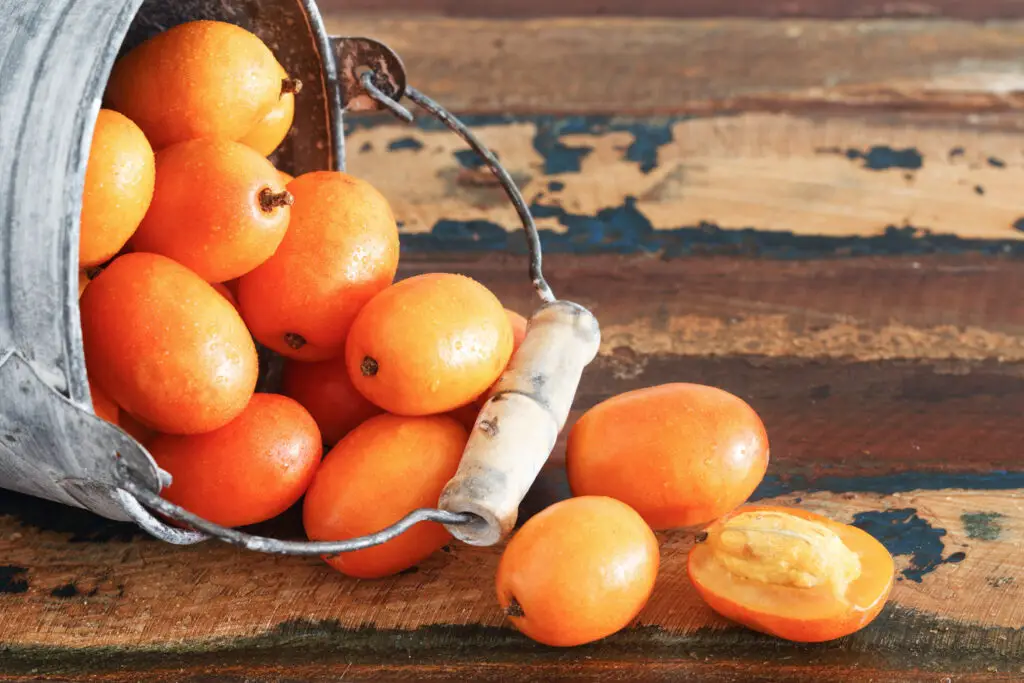
Hog plum, also known as maprang in Thailand, is a delicious fruit widely enjoyed throughout the country.
These small, green Thai fruits are a popular summer treat that is typically in season from May to July.
Hog plums have a unique tart and sour taste, similar to a mixture of apricots and green mangoes.
They are commonly eaten fresh but are also a popular ingredient in many Thai dishes.
Mangosteen
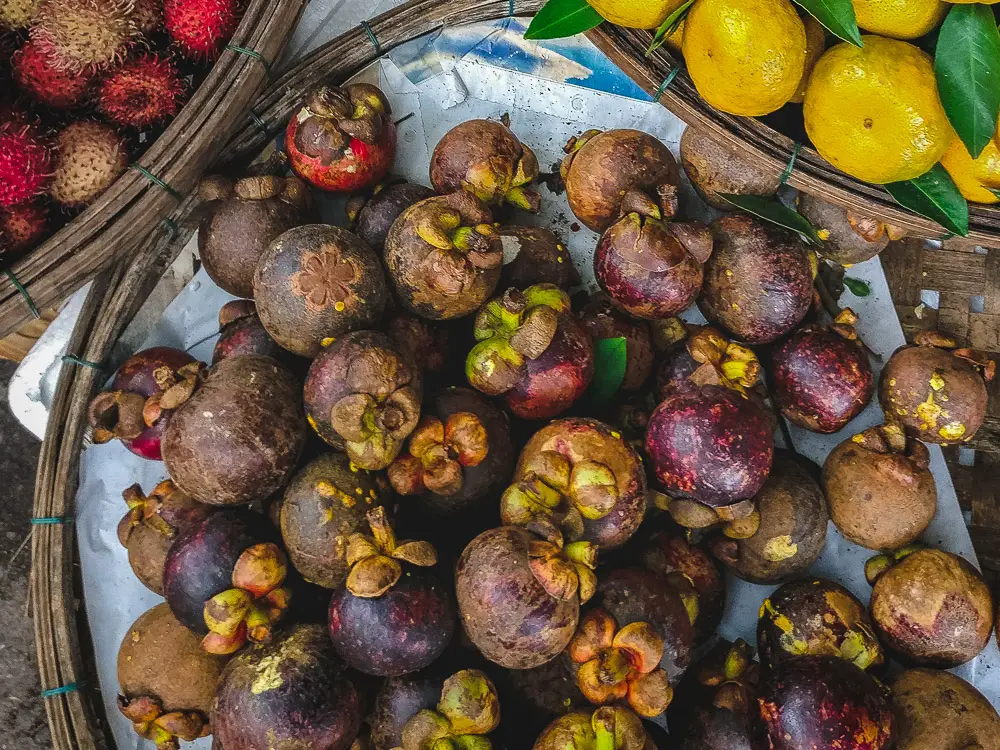
Mangosteens in Thailand are tropical fruit with a unique and delicious taste.
These round, purple fruits have a tough exterior, but the soft white flesh inside is sweet and tangy with lychee, peach, and citrus flavors.
Mangosteen season in Thailand is from May to September.
While they are commonly eaten raw as a snack, mangosteens are also used in many Thai recipes, such as curries and salads.
One popular recipe is the “Mangosteen and Prawn Salad,” which combines the sweet flavor of the fruit with the savory taste of shrimp and a spicy dressing.
Related: 19 African Fruits You Need to Try
Rambutan
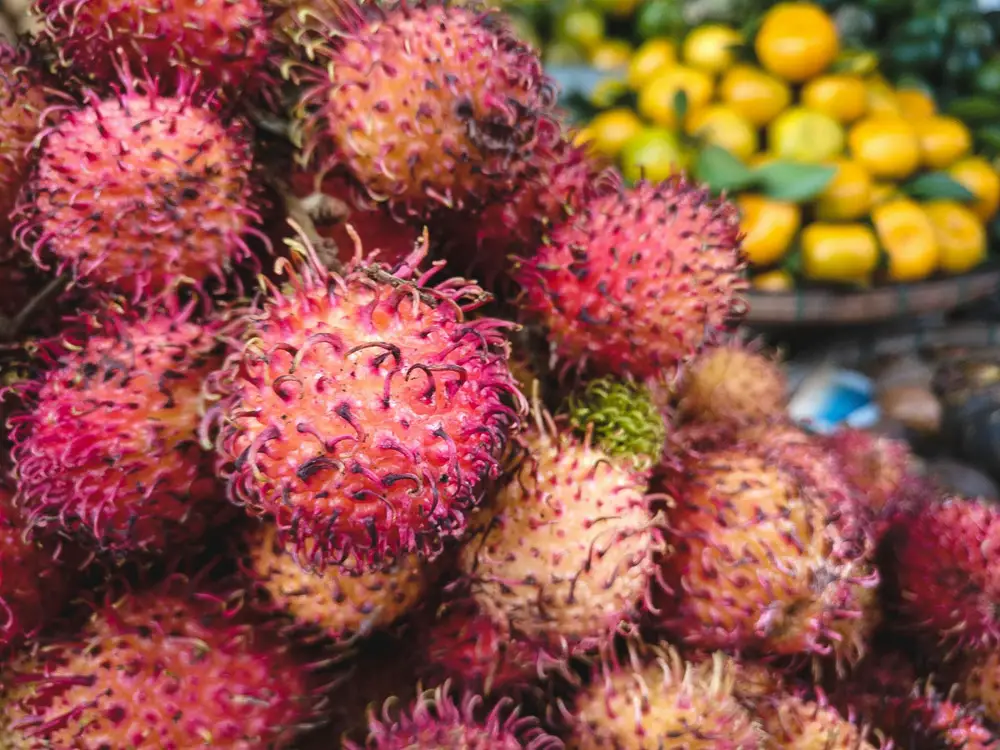
If you’re looking for a sweet and refreshing Thai fruit, search no further than the rambutan.
This exotic fruit has a spiky, red exterior that gives way to soft and juicy white flesh inside.
The taste is described as a mix of sweet and sour, similar to a grape, with a hint of lychee flavor.
Rambutans are in season from May to September, making them a popular fruit during the summer months.
In Thailand, these delicious tropical fruits are enjoyed as a snack and used in cooking.
Related: Rambutan vs Lychee vs Longan – Similarities and Differences
Lychee
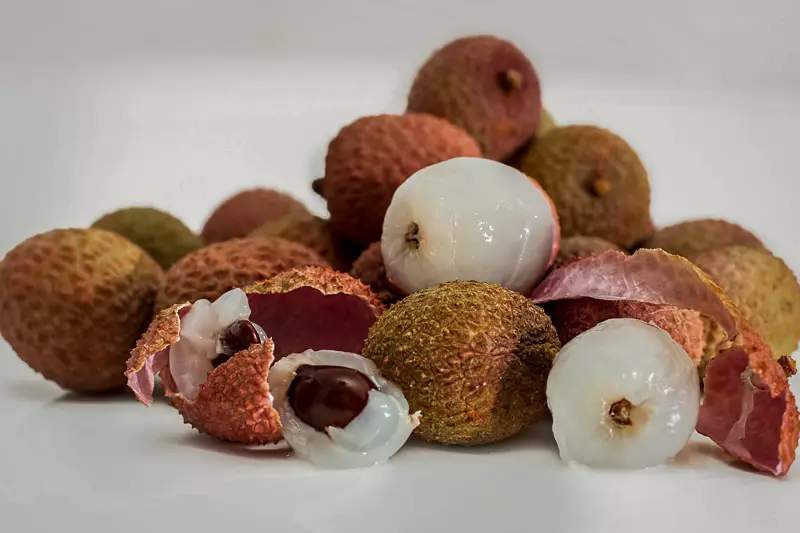
Lychee is a delicious fruit that tastes sweet and is widely enjoyed in Thailand.
The sweet and floral taste of the lychee makes it a unique treat for those with a sweet tooth.
The fruit is typically in season from May to July, and during this period, it can be found in abundance at local markets and street stalls.
Lychee is a versatile fruit used in many Thai dishes, and one popular dessert is Lychee Sorbet.
This refreshing and light dessert uses fresh lychees, sugar, and lemon juice blended, and then frozen to a perfect consistency.
The lychee sorbet is a perfect way to round off a hot summer meal, and it’s sure to be a hit with any dessert lover.
Related: Lychee Martini Recipe
Jackfruit

Have you ever tried jackfruit from Thailand?
Known as the largest tree fruit in the world, jackfruit is a staple ingredient in Thai cuisine.
Its juicy, sweet, and tropical flavor resembles a combination of pineapple and banana, making it a popular addition to desserts and curries. Jackfruit has a growing season from March to June in Thailand, where it is abundant and commonly found in markets.
The most popular Thai jackfruit dish is “ka-nom Ma-muang,” a sticky rice pudding layered with sweet, ripe jackfruit.
For a savory dish, jackfruit is used in “gaeng keow wan” or green curry, providing a meaty and satisfying texture.
Jackfruit seeds can be cooked and enjoyed as a snack and as part of a curry.
Related: 15 Delicious Fruits in Bali
Longan fruit
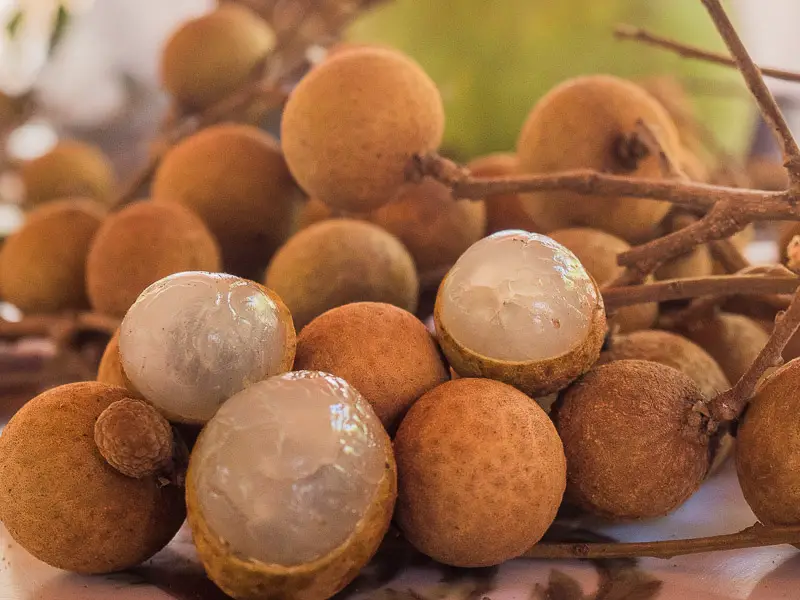
Longans, also known as “dragon eyes,” are a popular treat in Thailand. These small, round Thai fruits have a sweet, juicy flavor with a slightly tart aftertaste.
Longan has a whitish translucent flesh and encases a dark brown seed that resembles an eye.
Longan trees can be found throughout Thailand, and the main fruit season is typically from June to September.
In addition to being enjoyed as a snack, longans are commonly used in Thai cuisine.
One popular recipe is “tab tim krob,” a dessert made with longan fruit, water chestnuts, and coconut milk.
Thai Bananas
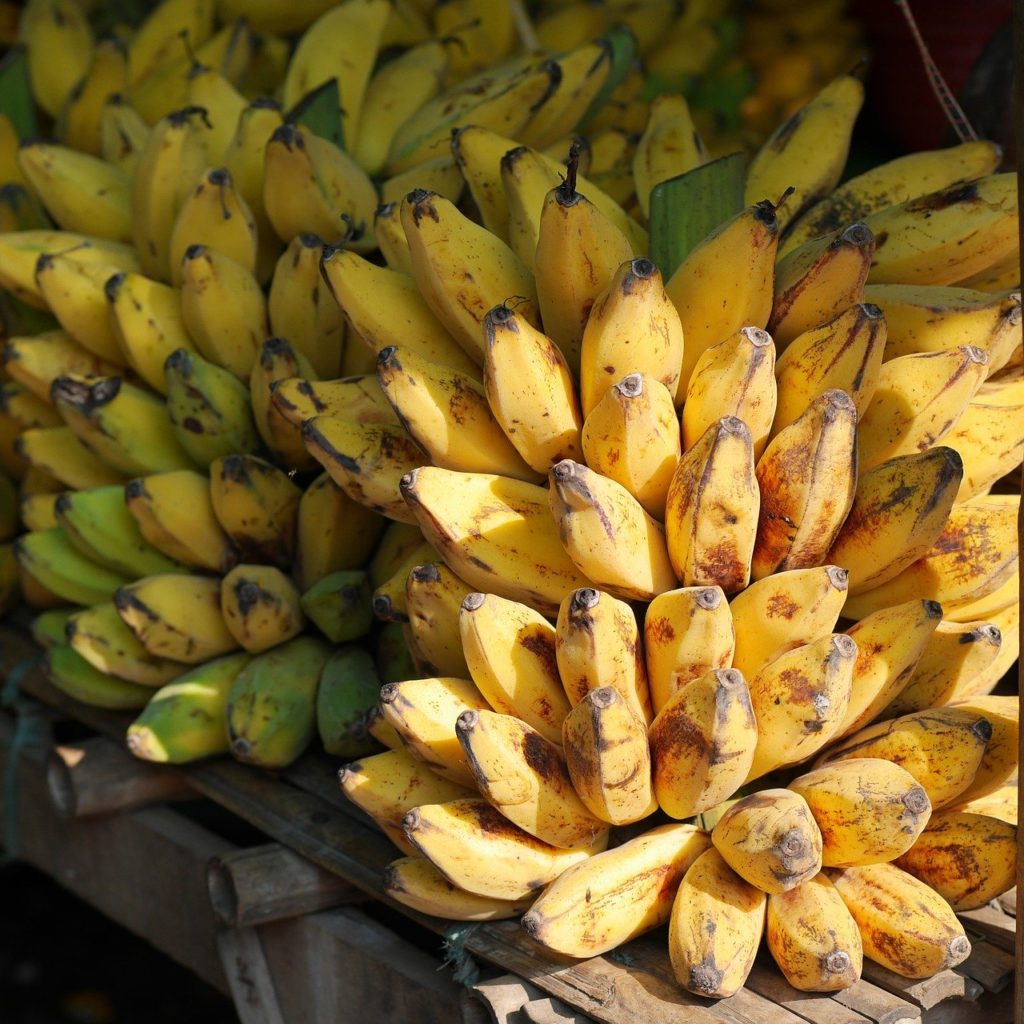
Bananas are one of the most popular fruits in Thailand, thanks to their sweet and creamy flavor.
However, few people know that bananas have a growing season in the country.
They are typically found in markets from May to August when the fruits are at their best.
If you want to try cooking with bananas, a popular Thai recipe is ‘kluay khaek,’ or grilled bananas.
The bananas are sliced lengthwise, brushed with coconut cream, sugar, and a dash of salt, and then grilled until caramelized.
Related: Indonesian Fruits You Need to try
Gac Fruit
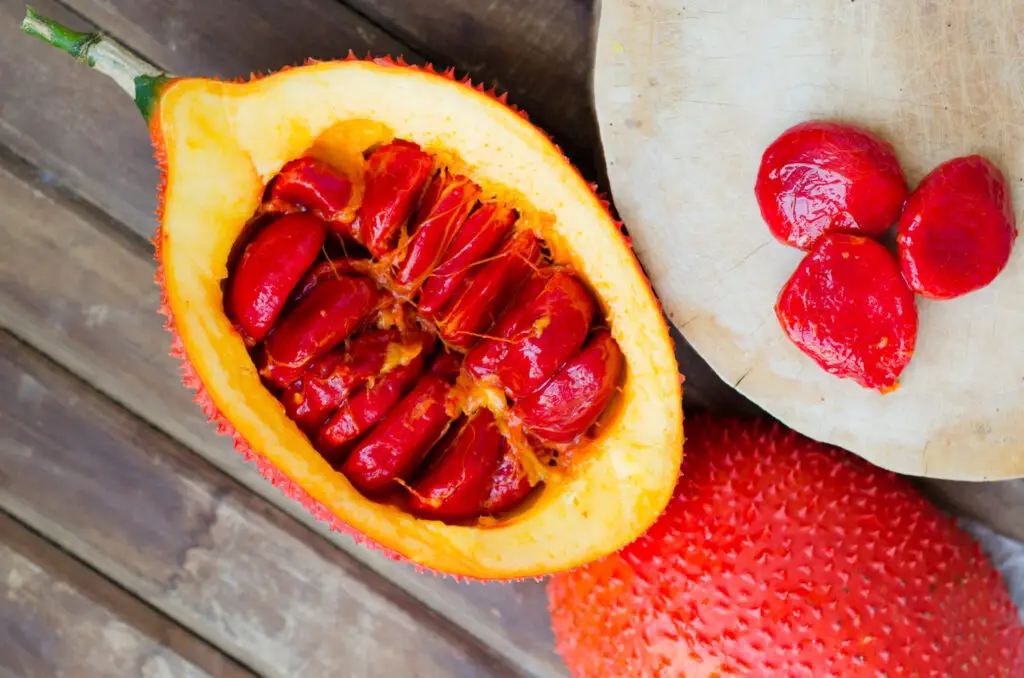
Thailand is known for its incredible variety of exotic fruits, and one that’s recently gained popularity both locally and abroad is the Gac fruit.
This strange-looking Thai fruit with bright orange flesh is rich in antioxidants and carotenoids and has been used in traditional medicine for centuries.
The Gac fruit season in Thailand usually starts around May and can last until November.
But what about the taste? Well, it’s hard to describe, some say it tastes like a combination of papaya and melon, and others say it’s more like a mix between pumpkin and sweet potato.
One delicious way to enjoy this mysterious fruit is by making a Gac fruit smoothie or juice.
Scoop out the flesh and blend it with coconut milk, ice, and a little bit of honey for some sweetness.
Sapodilla (Chico)
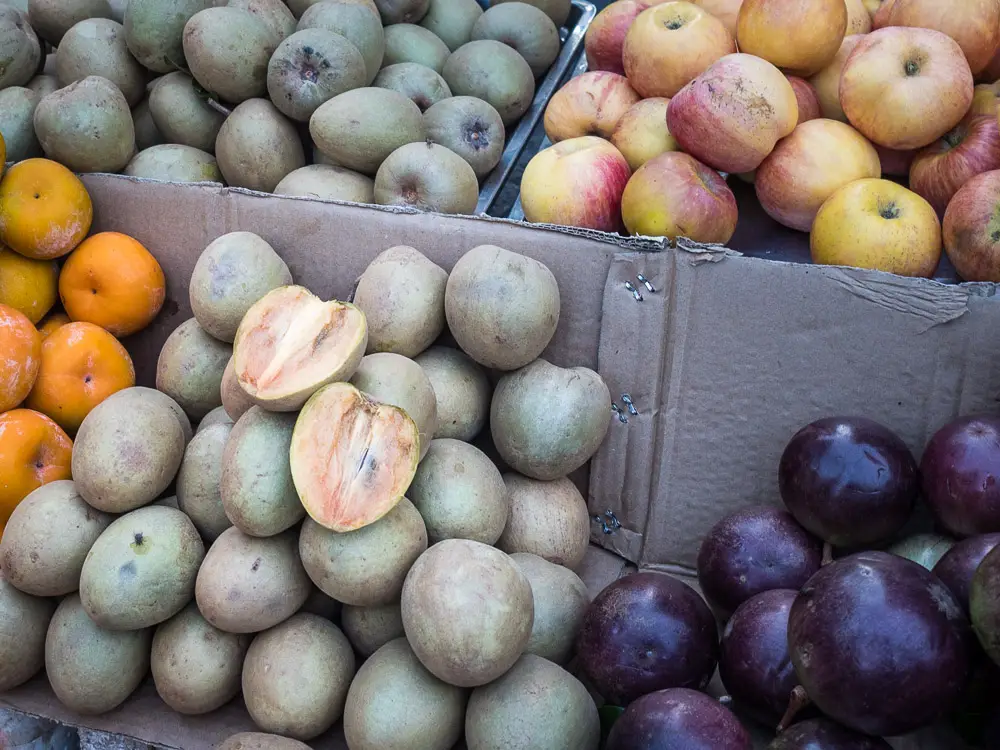
Sapodilla fruit, also known as “lamut khamen” in Thailand, is a sweet and succulent tropical fruit harvested during summer.
Its flavor is often compared to a combination of caramel and pear, with a creamy texture that melts in your mouth.
The fruit is usually eaten fresh, but as with other fruits in Thailand, it can also be used as an ingredient in traditional Thai desserts such as “khanom ma muang”, a sticky rice dessert topped with slices of ripe sapodilla fruit.
To make this delectable dish, cook sticky rice with coconut milk and sugar, and serve it alongside a spoonful of sliced sapodilla fruit for a perfect combination of rich flavors and textures.
Related: 12 Unique Fruits That Start With U
Summary of Thai Fruits
If you enjoyed our look at the wonderful fruits of Thailand, you might be interested in a few other fruit-related articles:
- Fruits of Vietnam – Eating and Tasting Guide
- African Pear – The Unique African Fruit
- Fruits That Start With W
- Fruits That Start With T
- 17 Unique Malay Drinks to Quench Your Thirst
- 21 Best Thai Cookbooks for Authentic Thai Food
Frequently Asked Questions
Q: When is mango season across Thailand?
A: Mangoes are a perennial favorite in Thailand, available from March to July in the northern and northeastern parts of the country; July to September in the central parts; and May to August in the south. The best time for picking them is usually late April or early May when they are ripe and sweet.
Q: What are the most expensive fruits in Thailand?
A: Some of the most expensive fruits in Thailand are durian, mangosteen, and longans. These exotic delicacies can cost up to 500 baht ($15) per kilo depending on their quality and seasonality.
Q: What is the smelliest fruit in Thailand?
A: The durian is by far the most pungent fruit in Thailand. Its smell can be described as a mix between rotting onions, garlic, and cheese. Despite its strong odor, durians are actually quite delicious and beloved by many locals.

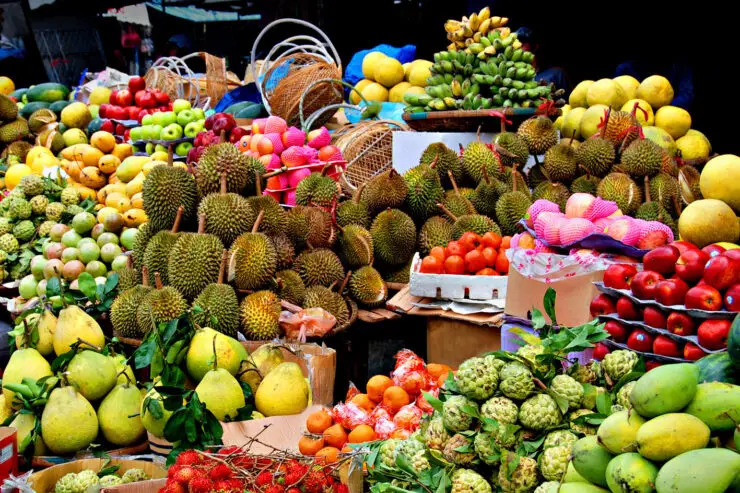
3 Comments